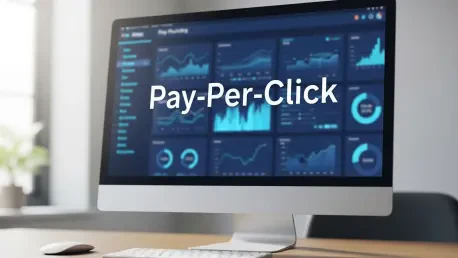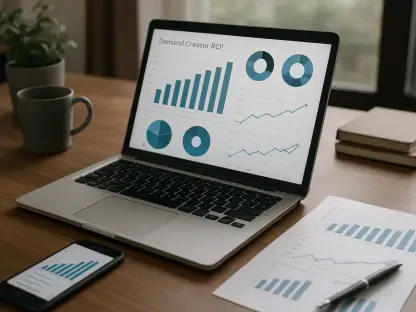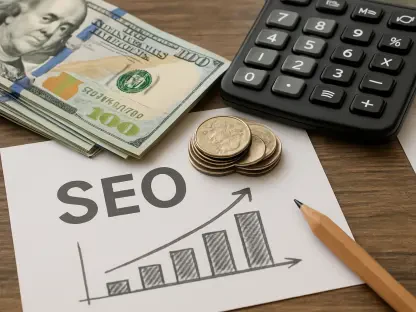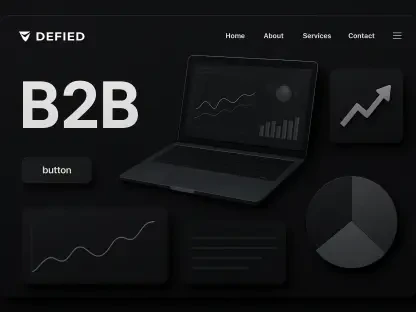Dive into the world of Pay-Per-Click (PPC) advertising with Anastasia Braitsik, a globally recognized leader in SEO, content marketing, and data analytics. With years of experience helping businesses optimize their digital strategies, Anastasia offers unparalleled insights into the nuances of PPC campaigns. In this engaging conversation, we explore why obsessing over click-through rates (CTR) can sometimes lead advertisers astray, how a lower CTR might actually drive better results, and the unique challenges B2B companies face in targeting the right audience. We also unpack strategies for balancing key metrics and crafting ads that attract qualified clicks. Whether you’re a seasoned marketer or just dipping your toes into PPC, Anastasia’s expertise will shed light on how to maximize your campaign’s true potential.
How do you think the focus on click-through rate (CTR) as a primary metric shapes the way advertisers approach PPC campaigns?
Many advertisers gravitate toward CTR because it’s an easy, visible indicator of how an ad grabs attention. It’s often tied to Quality Score, which can impact ad rankings and costs, so there’s this natural inclination to chase higher numbers. But this focus can create a tunnel vision where they prioritize clicks over everything else, sometimes forgetting that not all clicks are equal. A high CTR looks great on a report, but if those clicks aren’t turning into conversions or revenue, it’s just vanity metrics. I’ve seen campaigns where the obsession with CTR led to budgets being drained on irrelevant traffic, which ultimately hurts the bottom line.
What are some pitfalls of prioritizing CTR over other metrics like conversions or revenue?
The biggest pitfall is attracting the wrong audience. If you’re optimizing solely for clicks, you might end up with ads that are too broad or misleading, pulling in people who have no intention of buying or engaging further. This wastes budget and skews data, making it harder to refine your strategy. Plus, a high CTR with low conversions can tank your return on investment. For instance, an ad promising something unrealistic might get tons of clicks, but if it doesn’t deliver, you’re not just losing money—you’re also risking brand trust. It’s a short-term gain for a long-term loss.
Can you walk us through why a lower CTR might sometimes be a better indicator of success in a PPC campaign?
Absolutely. A lower CTR often means your ad is more targeted and reaching a smaller, but more relevant, audience. When you focus on pre-qualifying searchers with specific messaging, you might get fewer clicks, but those clicks are more likely to convert. It’s about quality over quantity. For example, a tightly focused ad with clear intent can filter out casual browsers and bring in users who are ready to take action, whether that’s a purchase or a lead form submission. In the end, fewer clicks with higher conversion rates often translate to better revenue and efficiency.
How does targeting the right audience influence the relationship between CTR and conversions?
Targeting the right audience is everything. When your ad speaks directly to the people most likely to convert, you’re not just throwing a wide net hoping for the best. You’re ensuring that the clicks you do get are from users who align with your goals. For instance, if you’re a B2B company, an ad that uses industry-specific language can deter consumers who aren’t your target, lowering your CTR but boosting conversions from qualified leads. It’s about setting the stage so that every click has a higher chance of becoming a customer, rather than just racking up numbers.
Can you share an example of a scenario where a high CTR could actually harm a campaign’s performance?
Sure, imagine an ad that promises something like “free money” or “instant savings” without any qualifiers. It’s going to get a sky-high CTR because it’s irresistible to almost anyone. But if the landing page reveals it’s actually about applying for a complex grant or a niche product, most of those clickers will bounce immediately. You’ve just spent a ton of money on clicks from people who were never going to convert. Worse, it can frustrate users and damage your brand’s credibility. I’ve seen businesses burn through budgets in days with ads like this, all because they chased clicks without considering intent.
For B2B companies, why is pre-qualifying searchers before they click so critical to campaign success?
B2B companies often deal with a mixed audience—consumers and businesses searching for the same keywords. If you don’t pre-qualify, you’re likely to attract a lot of consumer clicks that won’t convert because they’re not your target market. B2B sales cycles are longer, and the decision-makers have specific needs. Pre-qualifying through ad copy ensures you’re speaking to those decision-makers, not wasting budget on irrelevant traffic. It’s about making sure the people clicking are actually potential clients, not just curious browsers.
How does the difference between consumer and business search behaviors impact CTR and conversions in B2B campaigns?
Consumers often search with a broader, more casual intent—they might be looking for quick solutions or personal use products. Business searchers, on the other hand, are usually more deliberate, seeking specific solutions for professional needs. This difference means a generic ad for something like “safety gates” might get a high CTR from consumers but fail to convert because they’re not looking for industrial-grade products. B2B ads need to filter out that consumer noise to maintain a higher conversion rate, even if it means a lower CTR. It’s a trade-off for relevance.
What strategies can advertisers use to ensure their ads target only their intended B2B audience?
One of the best strategies is to use precise, industry-specific language in your ad copy. Terms that resonate with business searchers—like “industrial,” “enterprise,” or “OSHA compliance”—can naturally deter consumers who don’t relate to those concepts. You can also leverage negative keywords to exclude consumer-related searches. Another approach is to highlight B2B-specific benefits, like bulk pricing or custom solutions, right in the ad. It’s about creating a filter through messaging so that only the right people feel compelled to click.
When testing different ads, how do you strike a balance between optimizing for CTR and focusing on conversion rates?
Testing ads is all about looking beyond surface-level metrics. I don’t just pick the ad with the highest CTR or even the highest conversion rate in isolation. I look at metrics like conversion per impression or revenue per impression to get a fuller picture of performance. For example, an ad with a 5% CTR and 11% conversion rate might outperform one with a 15% CTR and 3% conversion rate when you calculate total conversions or revenue. It’s about finding the sweet spot where the clicks you’re getting are actually driving value, not just volume.
What’s your forecast for the future of PPC advertising, especially in terms of balancing metrics like CTR and conversions?
I think the future of PPC is going to lean heavily on smarter automation and AI-driven insights, which will help advertisers move beyond simplistic metrics like CTR. We’re already seeing platforms prioritize outcome-based metrics, like return on ad spend or lifetime value, over raw click data. I believe the focus will shift even more toward audience intent and personalization, with tools that predict which clicks are most likely to convert before the ad even runs. Advertisers who adapt to this by crafting hyper-targeted campaigns and embracing deeper analytics will stay ahead of the curve. It’s an exciting time to rethink how we measure success.









